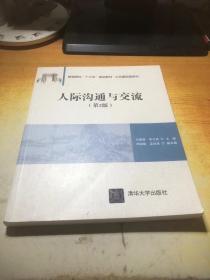
量子机器学习中数据挖掘的量子计算方法(英文版)
¥ 85 8.7折 ¥ 98 九品
仅1件
北京昌平
认证卖家担保交易快速发货售后保障
作者[匈]维特克(Wittek P.) 著
出版社哈尔滨工业大学出版社
出版时间2016-01
版次1
印刷时间2016
装帧平装
货号7+/2
上书时间2024-08-15
- 最新上架
商品详情
- 品相描述:九品
图书标准信息
- 作者 [匈]维特克(Wittek P.) 著
- 出版社 哈尔滨工业大学出版社
- 出版时间 2016-01
- 版次 1
- ISBN 9787560357591
- 定价 98.00元
- 装帧 平装
- 开本 16开
- 纸张 胶版纸
- 页数 163页
- 字数 260千字
- 正文语种 英语
- 丛书 国外优秀物理著作原版系列
- 【内容简介】
-
Machine learning is a fascinating area to work in: from detecting anomalous events in live streams of sensor data to identifying emergent topics involving text collection,exciting problems are never too far away.
Quantuminformation theory also teems with excitement. By manipulating particles at a subatomic level, we are able to perform Fourier transformation exponentially faster, or search in a database quadratically faster than the classical limit. Superdense coding transmits two classical bits using just one qubit. Quantum encryption is unbreakable-at least in theory. - 【目录】
-
Preface
Notations
Part One FundamentaIConcepts
1 Introduction
1.1 Learning Theory and Data Mining
1.2 Why Quantum Computers?
1.3 A Heterogeneous Model
1.4 An Overview of Quantum Machine Learning Algorithms
1.5 Quantum—Like Learning on Classical Computers
2 Machine Learning
2.1 Data—DrivenModels
2.2 FeatureSpace
2.3 Supervised and Unsupervised Learning
2.4 GeneralizationPerformance
2.5 ModeIComplexity
2.6 Ensembles
2.7 Data Dependencies and ComputationalComplexity
3 Quantum Mechanics
3.1 States and Superposition
3.2 Density Matrix Representation and Mixed States
3.3 Composite Systems and Entanglement
3.4 Evolution
3.5 Measurement
3.6 UncertaintyRelations
3.7 Tunneling
3.8 Adiabatic Theorem
3.9 No—CloningTheorem
4 Quantum Computing
4.1 Qubits and the Bloch Sphere
4.2 QuantumCircuits
4.3 Adiabatic Quantum Computing
4.4 QuantumParallelism
4.5 Grover's Algorithm
4.6 ComplexityClasses
4.7 QuantumInformationTheory
Part Two ClassicalLearning Algorithms
5 Unsupervised Learning
5.1 Principal Component Analysis
5.2 ManifoldEmbedding
5.3 K—Means and K—Medians Clustering
5.4 HierarchicalClustering
5.5 Density—BasedClustering
6 Pattern Recogrution and Neural Networks
6.1 ThePerceptron
6.2 HopfieldNetworks
6.3 FeedforwardNetworks
6.4 DeepLearning
6.5 ComputationalComplexity
7 Supervised Learning and Support Vector Machines
7.1 K—NearestNeighbors
7.20ptimal Margin Classifiers
7.3 SoftMargins
7.4 Nonlinearity and KemelFunctions
7.5 Least—SquaresFormulation
7.6 Generalization Performance
7.7 Multiclass Problems
7.8 Loss Functions
7.9 ComputationalComplexity
8 Regression Analysis
8.1 Linear Least Squares
8.2 NonlinearRegression
8.3 NonparametricRegression
8.4 ComputationalComplexity
9 Boosting
9.1 WeakClassifiers
9.2 AdaBoost
9.3 A Family of Convex Boosters
9.4 Nonconvex Loss Functions
Part Three Quantum Computing and Machine Learning
10 Clustering Structure and Quantum Computing
10.1 Quantum Random Access Memory
10.2 Calculating Dot Products
10.3 Quantum Principal Component Analysis
10.4 Toward Quantum Manifold Embedding
10.5 QuantumK—Means
10.6 QuantumK—Medians
10.7 Quantum Hierarchical Clustering
10.8 ComputationalComplexity
11 Quantum Pattern Recognition
11.1 Quantum Associative Memory
11.2 The Quantum Perceptron
11.3 Quantum Neural Networks
11.4 PhysicaIRealizations
11.5 ComputationalComplexity
12 QuantumClassification
12.1 Nearest Neighbors
12.2 Support Vector Machines with Grover's Search
12.3 Support Vector Machines with Exponential Speedup
12.4 ComputationalComplexity
13 Quantum Process Tomography and Regression
13.1 Channel—State Duality
13.2 Quantum Process Tomography
13.3 Groups, Compact Lie Groups, and the Unitary Group
13.4 Representation Theory
13.5 Parallel Application and Storage of the Unitary
13.6 Optimal State for Learning
13.7 Applying the Unitary and Finding the Parameter for the Input State
14 Boosting and Adiabatic Quantum Computing
14.1 Quantum Annealing
14.2 Quadratic Unconstrained Binary Optimization
14.3 Ising Model
14.4 QBoost
14.5 Nonconvexity
14.6 Sparsity, Bit Depth, and Generalization Performance
14.7 Mapping to Hardware
14.8 ComputationalComplexity
Bibliography
点击展开
点击收起
— 没有更多了 —














以下为对购买帮助不大的评价